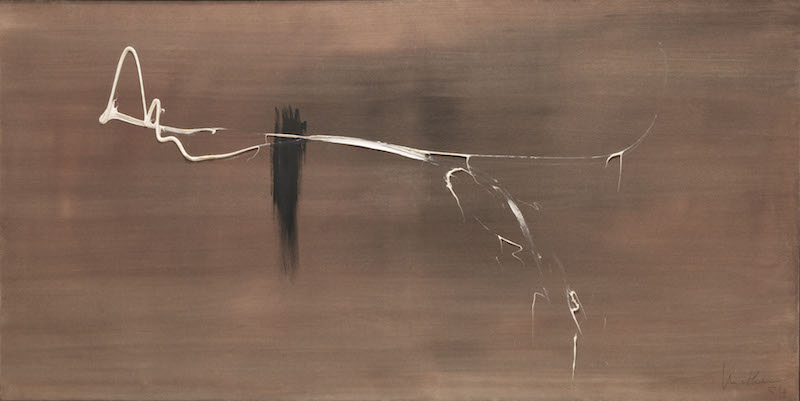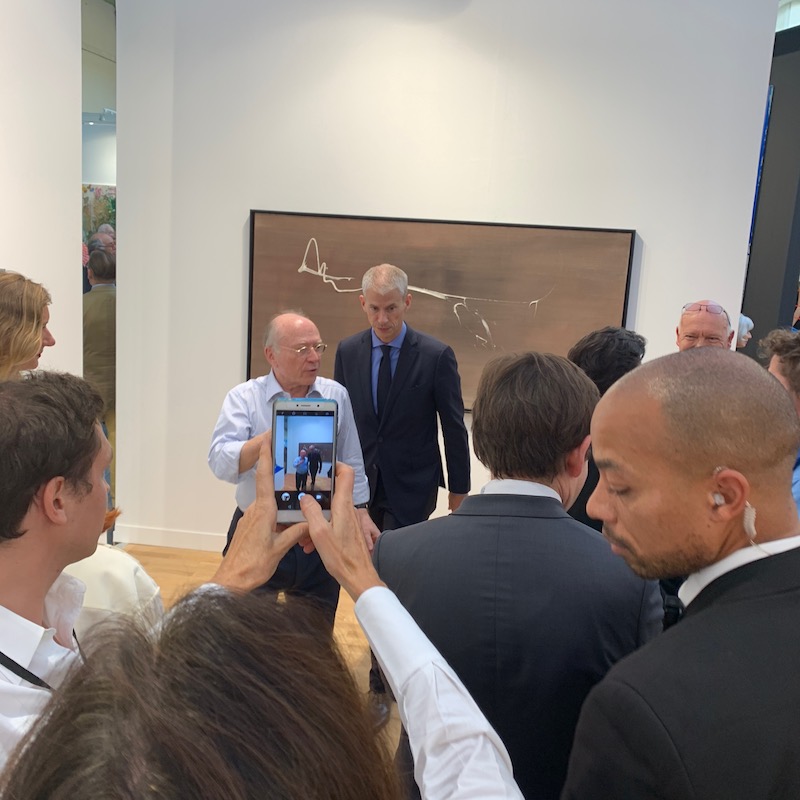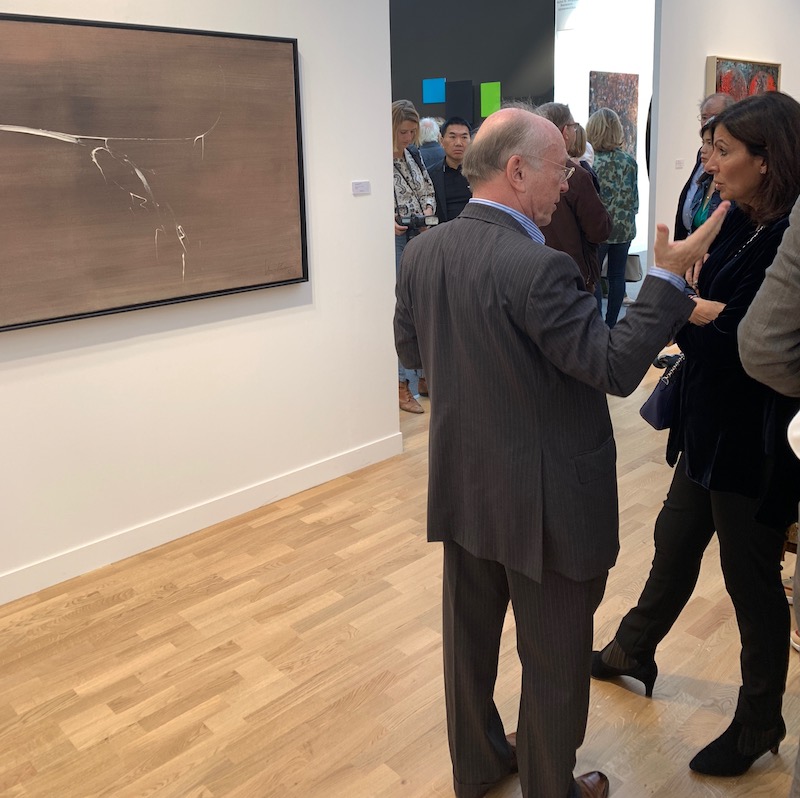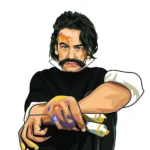Hommage à Adam du Petit Pont (1954)
Hommage à Adam du Petit Pont, 1954
Signed and dated at the bottom right ‘Mathieu 54’
Oil on canvas
38 1/4 x 76 3/4 in.
In 1958, Georges Mathieu was interviewed by Alain Bosquet in Cent questions discrètes et moins discrètes (One Hundred Discreet and Less Discreet Questions), published in 1960 in the first issue of the journal Ring des Arts. In the article, Mathieu declared that:
“Working on a previously prepared background, I execute a movement that, being at its maximum efficiency, requires nothing more to be added; I would go so far as to say that, for me, the paintings where I have managed to express the maximum with the minimum are the strongest, the most important.”
To illustrate his point, Mathieu declared that his painting Hommage à Adam du Petit Pont, “which is nothing more than a single sign, forms a work far rarer and more extraordinary [than Bataille de Bouvines, if it] manages to express everything with so little.”
In the words of Marie-Claude Dane, curator at the City of Paris Museum of Modern Art:
“Mathieu was to find confirmation of his intuitive techniques in Chan – or Zen – art, in terms of his speed of execution. (…) A new art will emerge more easily from a new technique; the pure Tachisme of Blanche de Turenne (1951) reveals the essential and the invisible. The subtle paring away of Adam du Petit Pont is more hieratic with the expressive autonomy of its single white brushstroke, as much relief as paint, squeezed straight from the tube in a handful of seconds.”
Georges Mathieu painted a very small number of the ‘Zen’ works during his career, works that deploy minimum signs for maximum force. The first of these, Blanche de Turenne (1951), Hommage à Godefroy de Bouillon (1952) and Hommage à Adam du Petit Pont (1954), resume in a few signs the birth of the Tachisme instigated by Mathieu. They allow us to imagine that state of ecstatic trance Mathieu sometimes attained after occasionally lengthy periods of intense concentration. His paintings, behind what at first appears as intense sobriety, are in fact the result of tremendously focused energy, deployed in a rapid and intuitive manner across canvases assailed by “brushstrokes and paint deposits imbued with maximum efficiency”, to the point where any addition becomes superfluous, leaving us to discover a small number of powerful ideograms written in the language of Mathieu, where “sign precedes meaning.” Looking again at Hommage à Adam du Petit Pont, one is inevitably reminded of the words of art critic Michel Tapié, writing in 1952 in the catalogue for the exhibition Le message signifiant de Georges Mathieu: “Mathieu’s visuals, far from approximation born of reflex […] appear as traces of gigantic orthopteran movements, traces not simply left – as the phrase goes – but carefully crafted in unequivocal witness to a paroxysmal creative moment.”
Exhibited:
Galerie Rive Droite, Paris, Les Capétiens partout !, nov. 1954, no. 1 (illustrated in the catalogue).
Kunstverein, Cologne, 1959, no. 9 (illustrated in the catalogue).
Musée d’Art Moderne de la Ville de Paris, Paris, Mathieu, 1963, no. 45 (illustrated in the catalogue).
Galerie Albert Verbeke, Paris, Situation – De Kooning, Mathieu, Pollock, 1973, no. 4 (illustrated in the catalogue).
Galerie Nationale du Jeu de Paume, Paris, Georges Mathieu, 2002 (illustrated in the catalogue, pp. 140-141). This exhibition later travelled to Salle Saint-Georges, Liège ; Galleria Gruppo Credito Valtellenise, Refettorio delle Stelline, Milan.
Literature:
M.-C. Dane, Mathieu, coll. Les peintres célèbres, Mazenod, Paris, 1964, p. 239.
F. Mathey, Georges Mathieu, Hachette-Fabbri, Paris-Milan, 1969, no. 73 (illustrated).
D. Quignon-Fleuret, Mathieu, Flammarion, Paris, 1977, p. 45.
G. Mathieu, Mathieu, 50 ans de création, Hervas, Paris, 2003, p. 44 (illustrated, p. 799).
L. Harambourg, Georges Mathieu, Ides et Calendes, 2013, p. 48.








